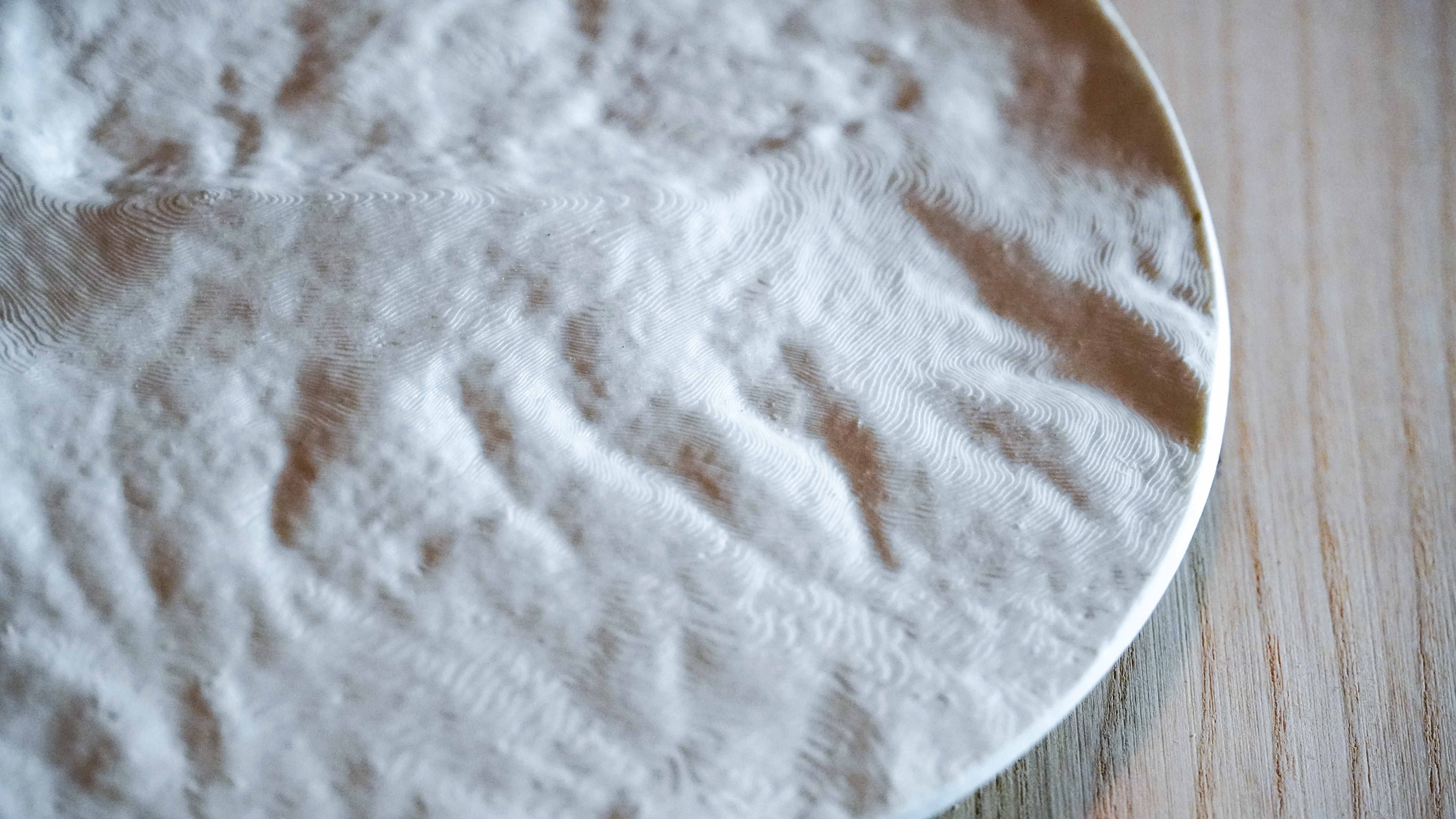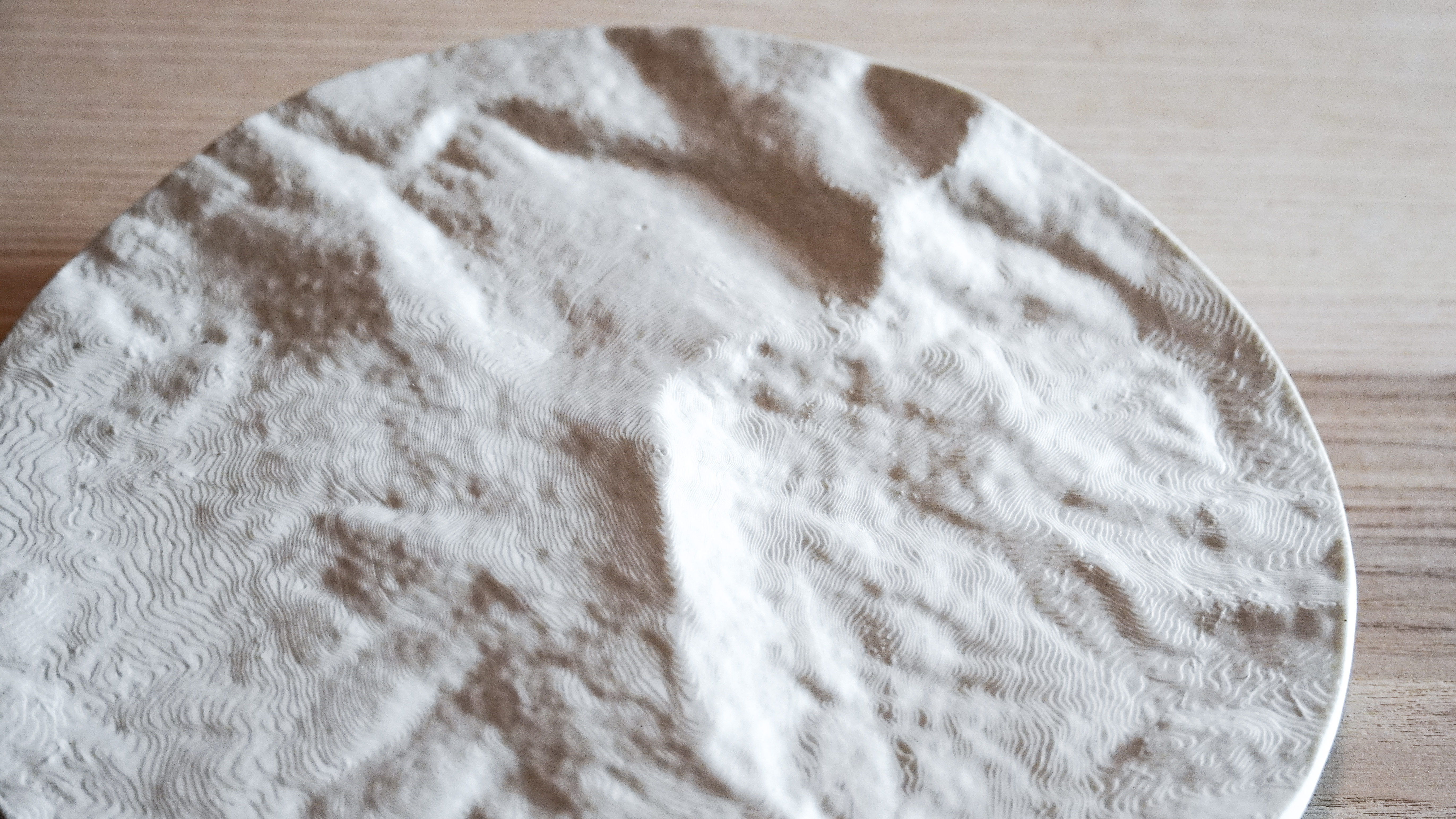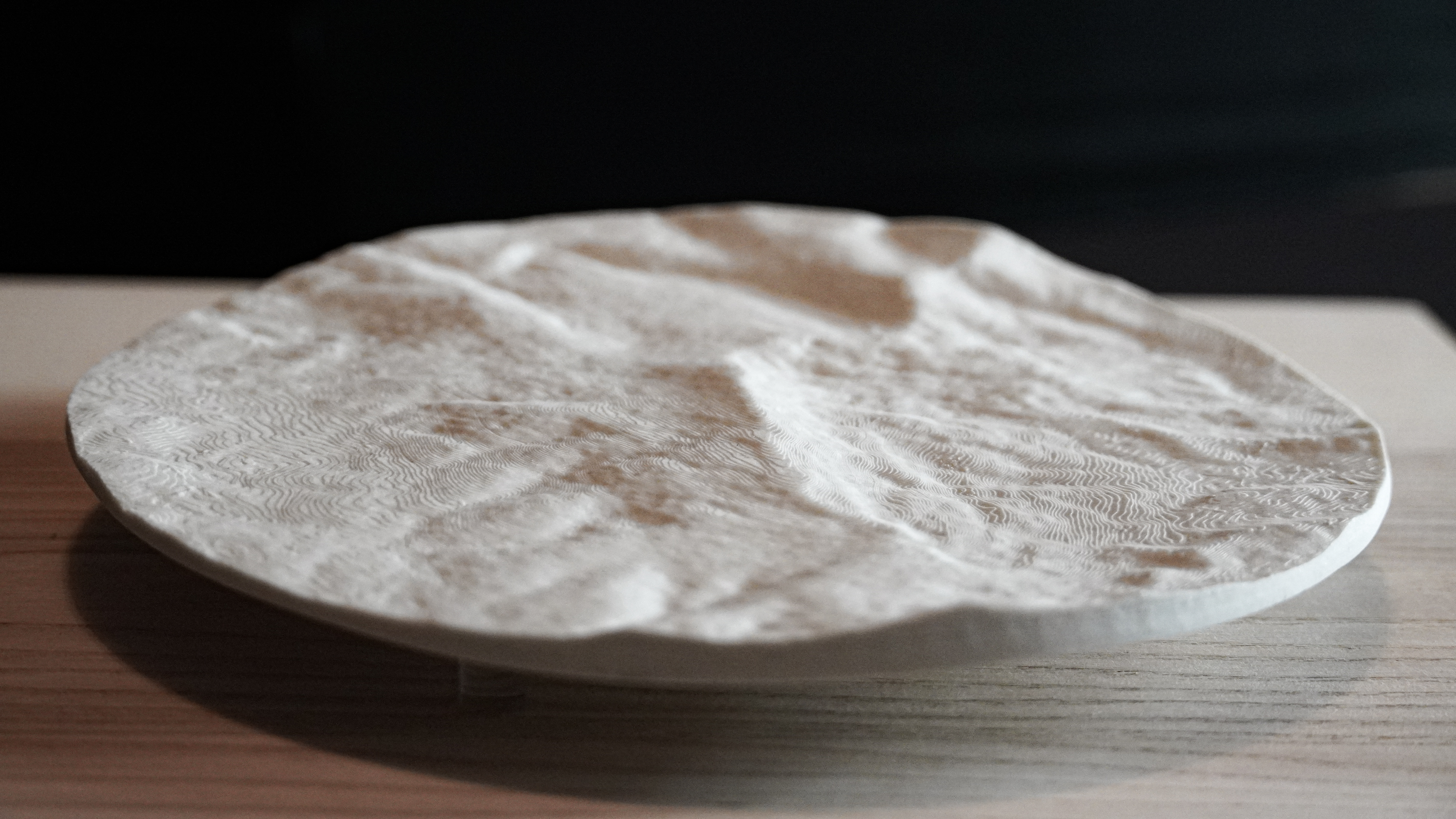









Magdalena Stecka, the artist: 'The series "Fragile Nature" was created as part of a project co-financed by the Artistic Scholarship of the City of Łódź in 2022 Works exhibited during the Academy of Masters (III) Artistic creation as part of the creative process.
A series of porcelain sculptures inspired by the geological formation of selected sites in Poland. Their unique character stems from the specific microclimate and the delicate homeostasis between the inanimate and animate nature of the area. The choice of these regions is subjective and dictated by the emotions accompanying the sensation of the constant changes taking place in nature.
The work, through form and material (porcelain), symbolically represents the value and at the same time the fragility of the natural structure of these places. The sculptures created through 3D printed moulds reflect the tool used, preserving visible layers like geographical levels, emphasizing the unique shape, like human fingerprints.
The sculptures depict the surface of lakes, mountains and other natural landscape elements that blind people cannot experience visually. This is where the phenomenon of the work interacting with the viewer through touch begins. The sculptures are only lightly glazed, and their hidden message is related to their exploitation by people. Through touch, the material will become dirty and damaged - a reference to the process that occurs in nature. Changes in the environment occur slowly, and we can only observe the effects of our influence on the homeostasis of a region when irreversible degradation occurs. The sculptures are subject to an analogous process, deteriorating with every touch, and crumbling, as a result of the exploratory actions of the viewers.'